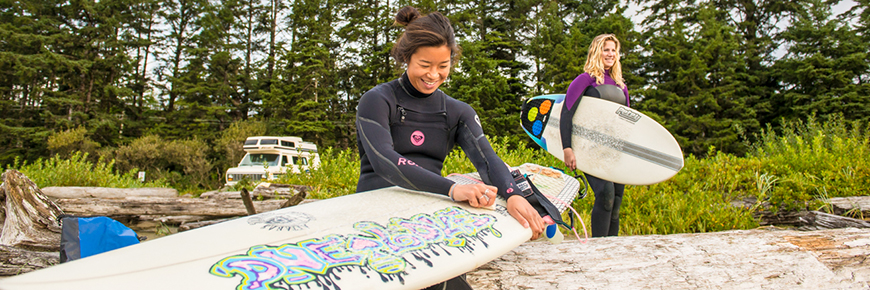
Surfing
Pacific Rim National Park Reserve
Unsupervised beaches
All beaches are unsupervised. There are no lifeguards or surf guards on duty.
Beaches in the Long Beach unit of Pacific Rim National Park Reserve and the surrounding area are a popular destination for a variety of surf experiences that shift with tides, weather, and other factors.
People surf year-round in Pacific Rim National Park Reserve. Winter surf conditions tend to be for experienced surfers, while the summer surf conditions are more moderate. No matter what time of year you visit, it is important to be aware of coastal hazards.
To make your surfing experience as safe and enjoyable as possible, here are a few tips.
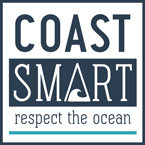
Be CoastSmart and ‘know before you go’ near the water
CoastSmart.ca is the go-to place to find the ocean safety information you need to make smart decisions when going in the water, or even near it. It was specifically developed by the Districts of Tofino, Ucluelet and Pacific Rim National Park Reserve. There are a range of quick facts, cool videos and even a quiz to help you know before you go near the water.
Learn about local rip currents and other hazards
It is important to be able to identify water hazards and rip currents that are specific to the area where you will be surfing. Below are some local area maps that identify hazardous currents and “no go” zones specific to Pacific Rim National Park Reserve. These maps can also be found on-site at local beaches and trailheads.Hazardous currents and “no go” zones:
Cox Bay
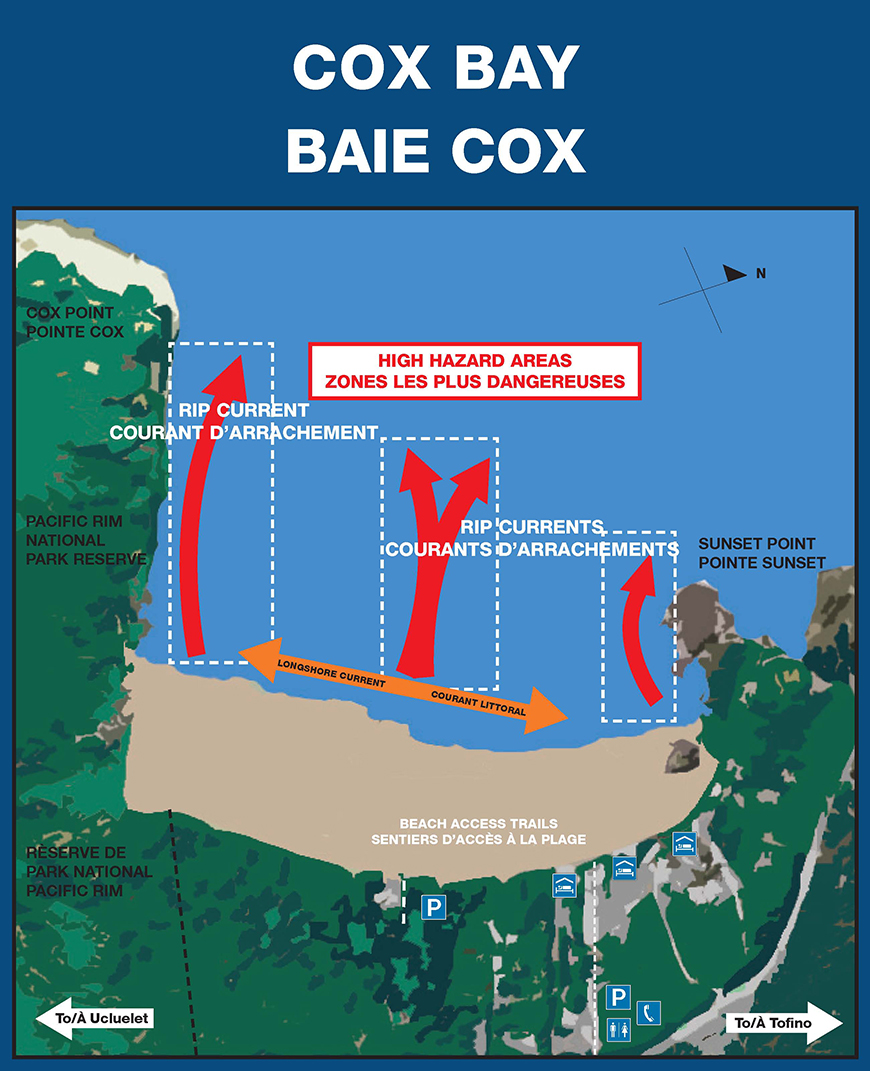
Florencia Bay
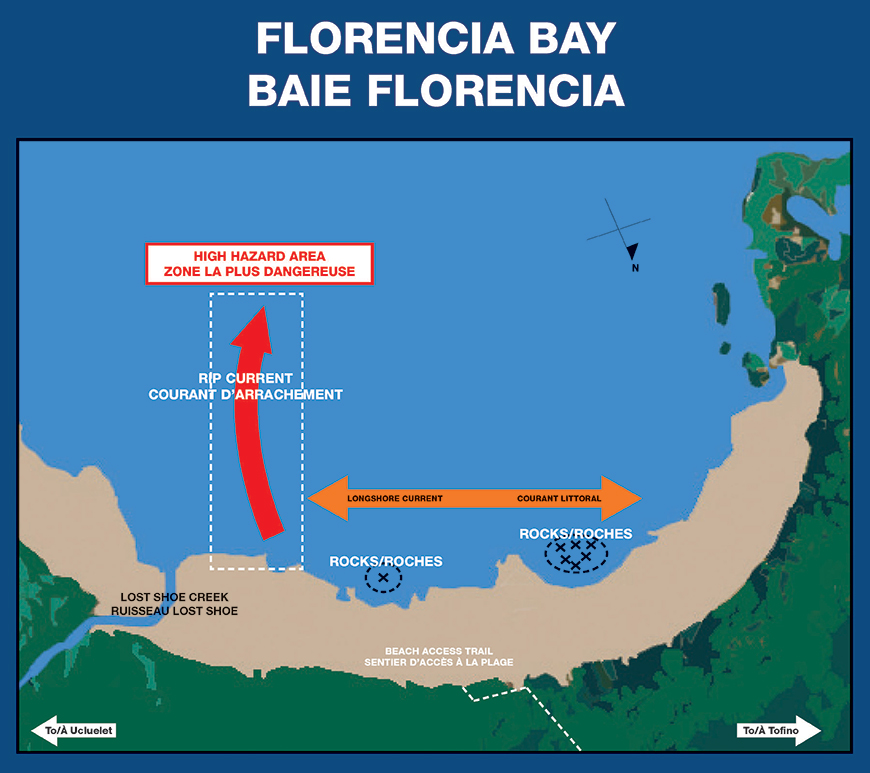
Green Point
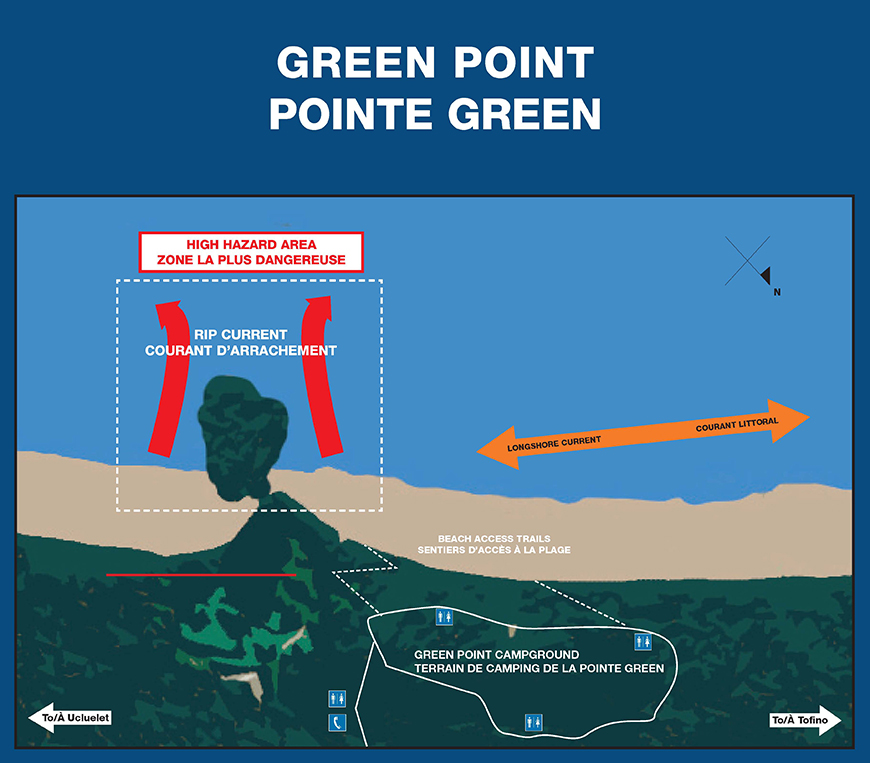
Long Beach
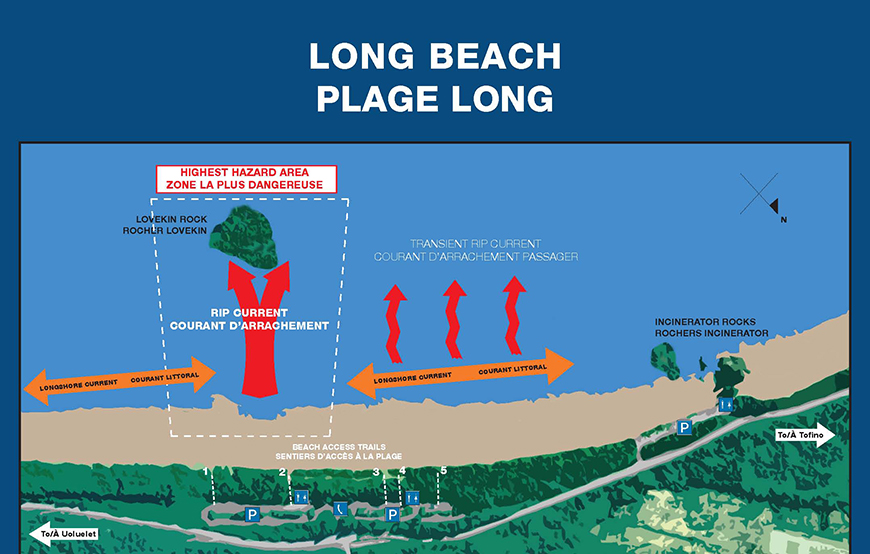
Wickaninnish Beach
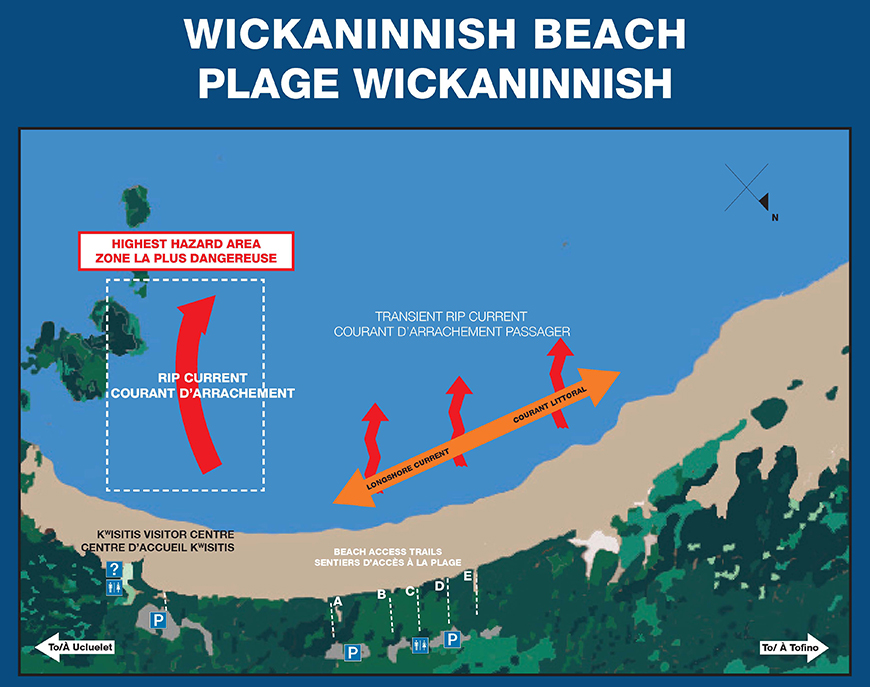
Know your limits and surf within your abilities – take a lesson
Surfers often push their limits, however surfing in conditions that are beyond your ability is not only unsafe for you, but also to other surfers in the area who might need to avoid you getting in the way.
If you are new to surfing, a bit rusty, or are unfamiliar with the area, take a lesson from a surf instructor from a licensed surf school. The instructor will not only advance your surfing skills but familiarize you with the local conditions and hazards. There are a number of surf schools licenced to operate and teach within the Pacific Rim National Park Reserve.
Protect your head when you fall
Head injuries are one of the most common injuries when surfing. Cover your head when falling to protect yourself from your surfboard, fellow surfers and the ocean floor. A surf-specific helmet is strongly advised.
Keep hold of your surfboard and wear a leash
Always keep your surfboard with you and avoid “ditching” (or letting it go) while in the water. This can be a hazard for other surfers as well as yourself. Always use a leash to help you with this.
Have the proper equipment and be prepared
Wear a wet-suit at all times. The water here is cold even in the summer (ranging from 7 oC to 14 oC) and you should wear, at a minimum, a 4mm wetsuit in the summer and a 5mm in the winter. Booties, gloves and a hood are highly recommended to keep you warm.
Use a surfboard that matches your skill level. Surfboards vary in size, shape and material. Ask a local surf shop for advice or, better yet, take a surf lesson!
In all cases, be familiar with your equipment.
Follow surf etiquette
Be aware of other people in the water as you will likely be sharing the area with swimmers and other wave riders. Do not go surfing without a basic understanding of surf etiquette.
Proper surf etiquette includes “The Surfer’s Code”:
- Don’t “drop-in” or “Snake”
Do not catch a wave once another surfer has claimed it. - Paddle wide
When paddling out, stay away from other surfers. - Control your surfboard
Letting go of your board is a hazard to others. If you must let go make sure no one is behind you or nearby. - Communicate with water users nearby
Let others know which way you are going.
Check local weather forecast and surf conditions before you go
If you don’t know how to read the wave forecast, check with a local surf shop.
Facilities and services
Washrooms
Washrooms are located in the following day use areas:
- Wickaninnish Beach
- Incinerator Rock
- Long Beach
- Combers Beach
- Florencia Bay
Change rooms
Change rooms are located at the following day use areas:
- Wickaninnish Beach
- Incinerator Rock
- Long Beach
Related links
- ʔapsčiik t̓ašii (Multi-use pathway)
- 150 adventures for your bucket list
- Birding
- Boating
- Camping
- Cycling, mountain biking, and e-biking
- First Nations cultural experiences
- Fishing
- Geocaching
- Hiking
- Hiking: West Coast Trail
- Kapyong Memorial at Radar Hill
- Kwisitis Visitor Centre
- Red Chairs
- School and group programs
- Storm watching
- Volunteer opportunities
- Licensed operators
- Date modified :

